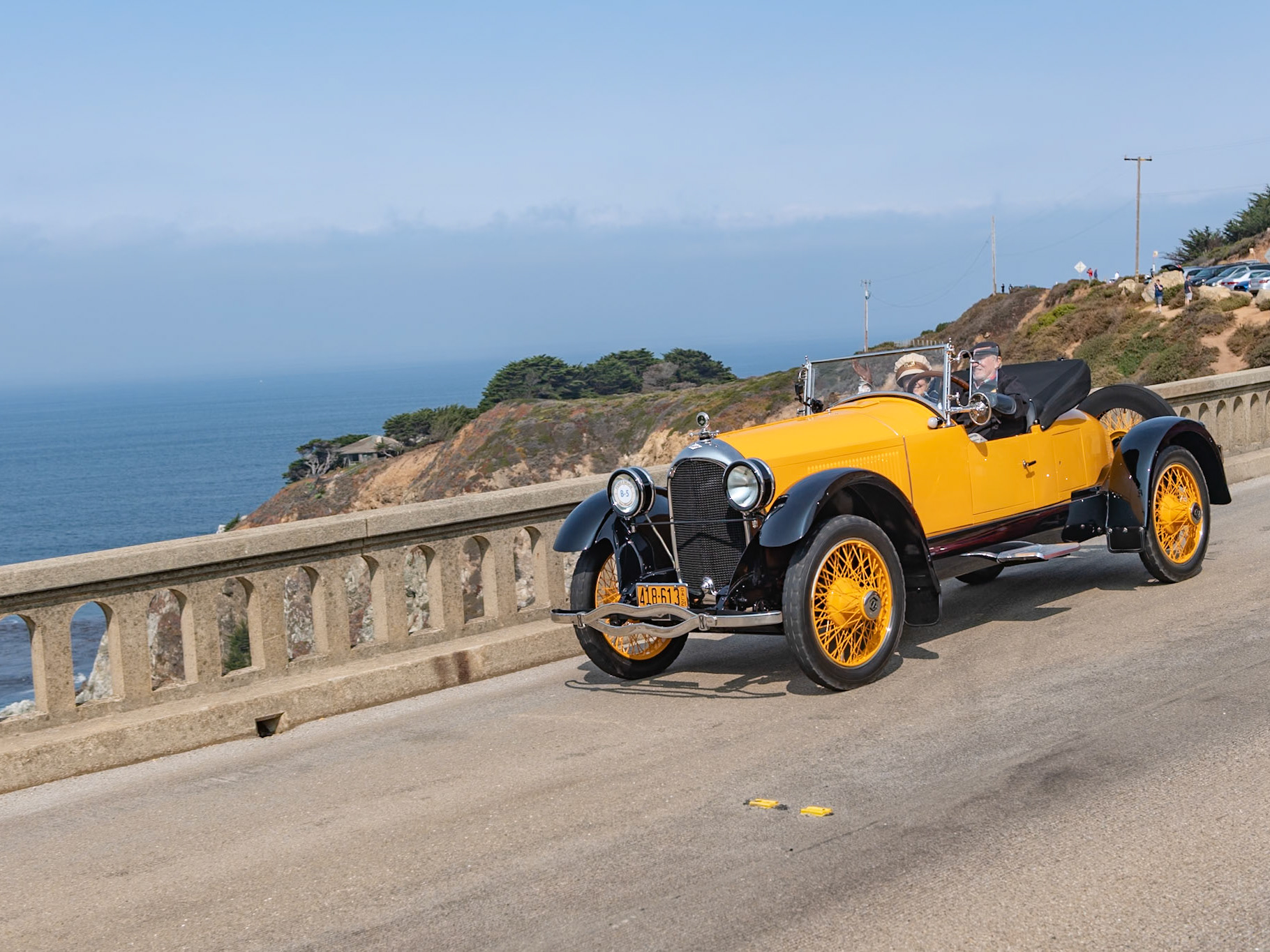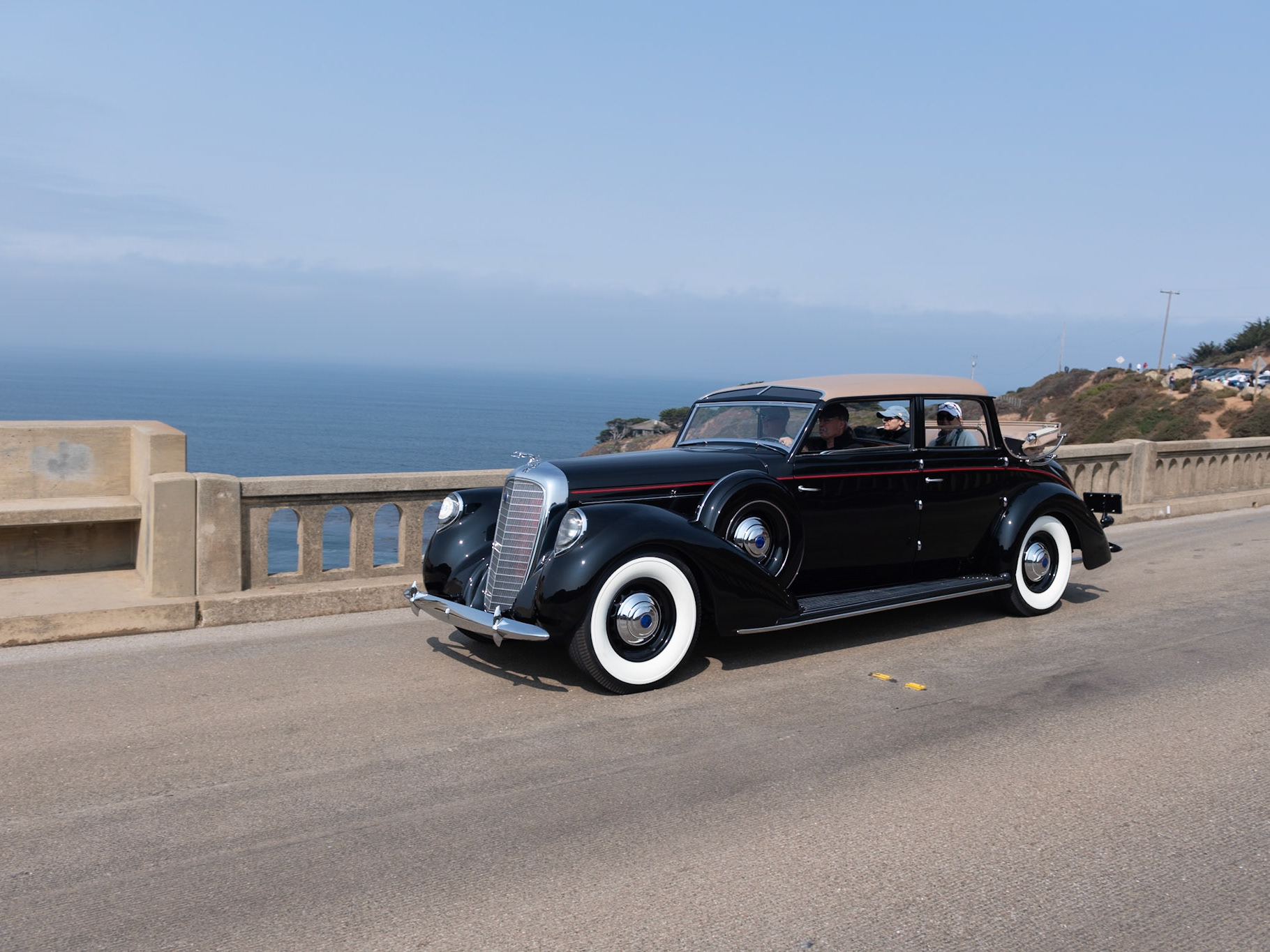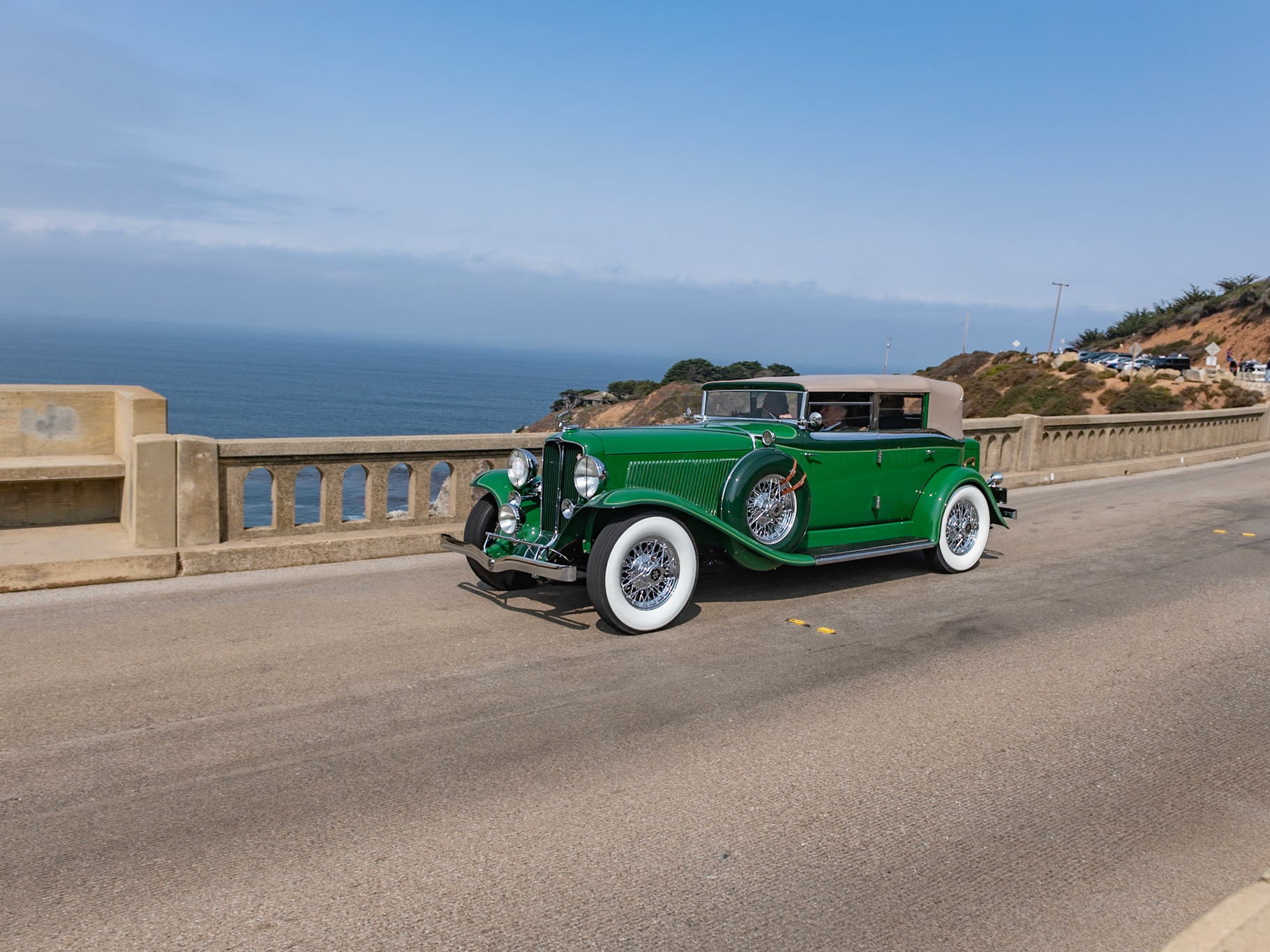
Maserati introduced its 6-cylinder, 3-liter 300S in order to compete with Ferrari’s 3-liter 750 Monza for the 1954 season. The lightweight chassis was developed from the previous Maserati A6GCS, and the body was built by Fantuzzi. Between 1955 and 1959, twenty six cars were built, and they were piloted by race drivers such as Luigi Musso, José Froilán González, Harry Schell and Jean Behra. This car (chassis 3058) was ordered by Scuderia Parravano. It was first tested by Peter Collins at Modena and then, after arriving in the United States, was immediately successful at Palm Springs in the hands of Masten Gregory. A month later Gregory won on the Torrey Pines circuit against Phil Hill, who was in a Ferrari. When Parravano disappeared to Mexico in 1960 all his cars went with him, and this 300S didn’t return until 1977. It was then acquired by the Hayashi Collection. The current owner purchased it in 2000.

The Mistral was the last of the classic straight-6 engine Maseratis. The aluminum body was designed by Pietro Frua and built by Vignale, and the first cars were presented at the Turin Motor Salon in November 1963. The Mistral was available in Coupé and Spider versions with either a 3.5-, 3.7- or 4.0-liter engine. The Frua-styled fastback profile was one of the first true hatchbacks ever produced. A 1964 Maserati Mistral Coupé went on to win Best of Show at the 1968 Pebble Beach Concours d’Elegance—the last time a “then-new” car was selected for the show’s top award. This Maserati Mistral is one of 828 coupés built with a 3.7-liter, twin-overhead-cam 6-cylinder engine with Lucas mechanical fuel injection. It was first delivered to Norbert McNamara and remains in original condition.

Ivan and Myrna Ruiz, Dawsonville, GA

Maserati introduced its 6-cylinder, 3-liter 300S in order to compete with Ferrari’s 3-liter 750 Monza for the 1954 season. The lightweight chassis was developed from the previous Maserati A6GCS, and the body was built by Fantuzzi. Between 1955 and 1959, twenty six cars were built, and they were piloted by race drivers such as Luigi Musso, José Froilán González, Harry Schell and Jean Behra. This car (chassis 3058) was ordered by Scuderia Parravano. It was first tested by Peter Collins at Modena and then, after arriving in the United States, was immediately successful at Palm Springs in the hands of Masten Gregory. A month later Gregory won on the Torrey Pines circuit against Phil Hill, who was in a Ferrari. When Parravano disappeared to Mexico in 1960 all his cars went with him, and this 300S didn’t return until 1977. It was then acquired by the Hayashi Collection. The current owner purchased it in 2000.

Maserati’s postwar racing models significantly improved business for the company during the early 1950s. The first 6-cylinder model, the A6, was enlarged from 1500 cc to 2-liters and given the name A6G, and then, in 1953, the engine was updated and tuned by Gioacchino Colombo, resulting in the more powerful 170-bhp A6GCS, where the CS stood for Corsa Sport. The new car also featured a new tubular chassis built by the engineering company Gilco in Milan. Between 1953 and 1955, just 52 of the A6GCS were built, and 48 were open spyders. This car (chassis 2077) was bodied by Carrozzeria Frua for the amateur Italian race driver Siro Sbraci in 1954, and it first raced in the 1955 Mille Miglia, where it finished in twelfth place overall and third in class. The car was imported into the United States and used for SCCS racing in the 1960s. After it retired, the car was purchased by Fred Simeone, who sold it to its current owner in 2001. The A6GCS has recently been restored to its condition and livery at the 1955 Mille Miglia.














